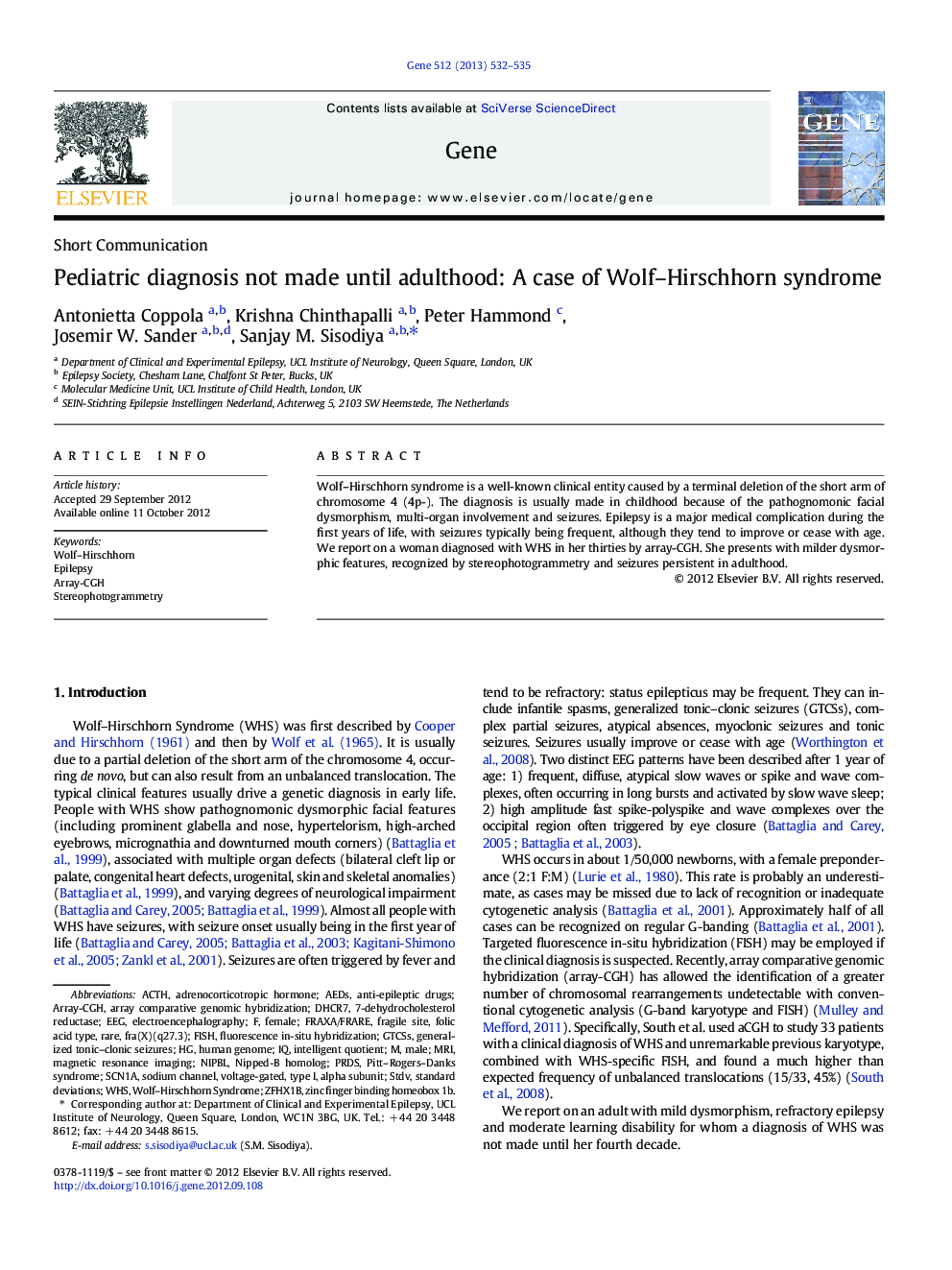| Article ID | Journal | Published Year | Pages | File Type |
|---|---|---|---|---|
| 2817485 | Gene | 2013 | 4 Pages |
Wolf–Hirschhorn syndrome is a well-known clinical entity caused by a terminal deletion of the short arm of chromosome 4 (4p-). The diagnosis is usually made in childhood because of the pathognomonic facial dysmorphism, multi-organ involvement and seizures. Epilepsy is a major medical complication during the first years of life, with seizures typically being frequent, although they tend to improve or cease with age. We report on a woman diagnosed with WHS in her thirties by array-CGH. She presents with milder dysmorphic features, recognized by stereophotogrammetry and seizures persistent in adulthood.
► Milder dysmorphic features can be missed by examination especially in adulthood ► Dysmorphisms may change with aging and photographs from infancy may be helpful ► Quantitative facial analysis may suggest a diagnosis ► Array-CGH is a valid diagnostic tool in adults with epilepsy and additional features ► The phenotypic spectrum of well-known syndromes may be broader than appreciated
